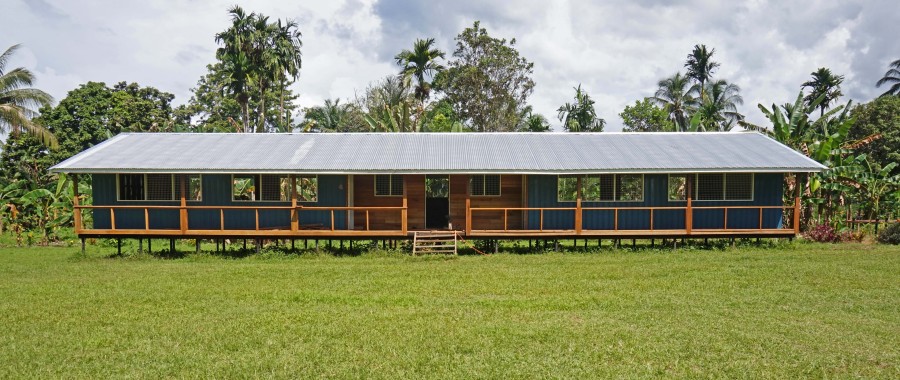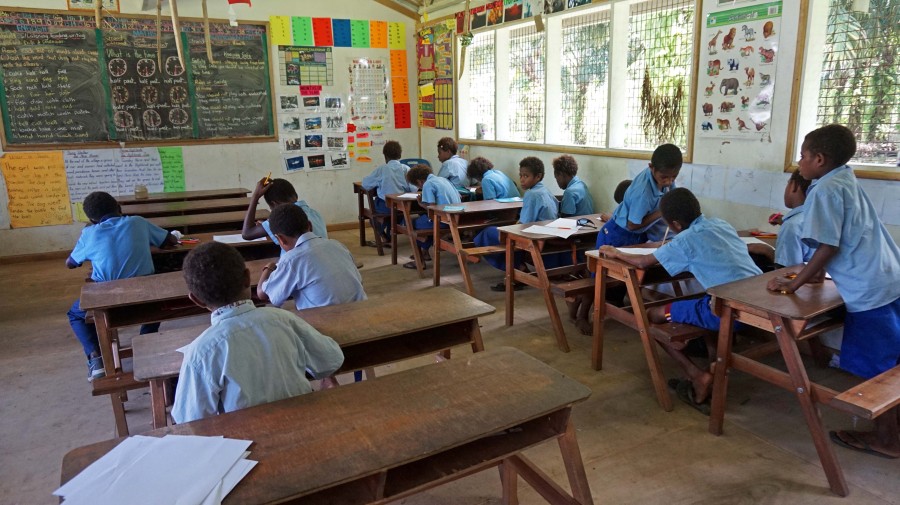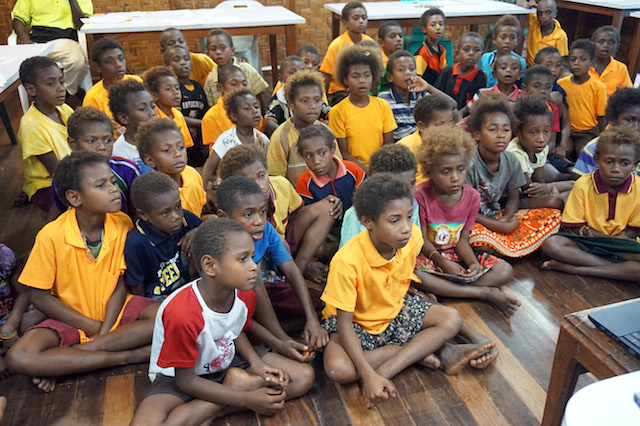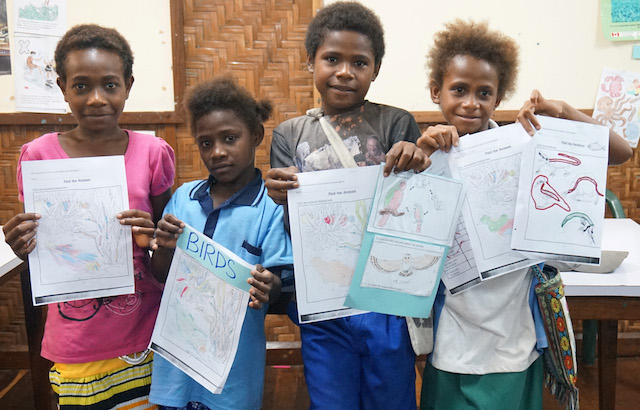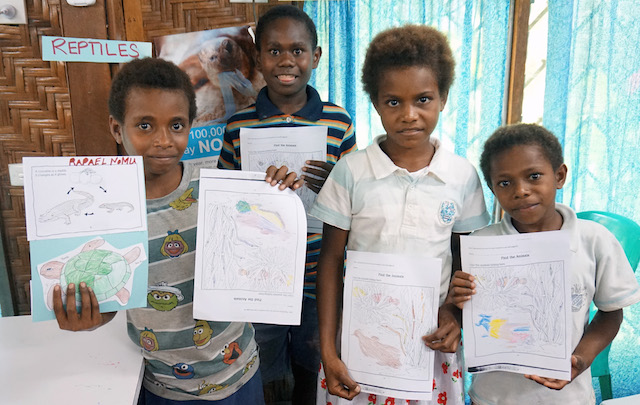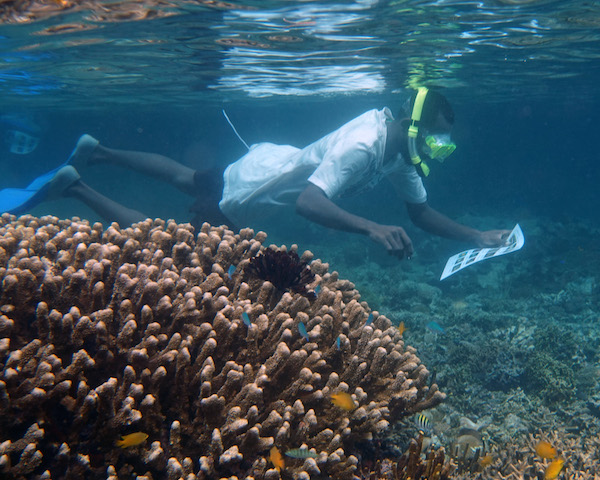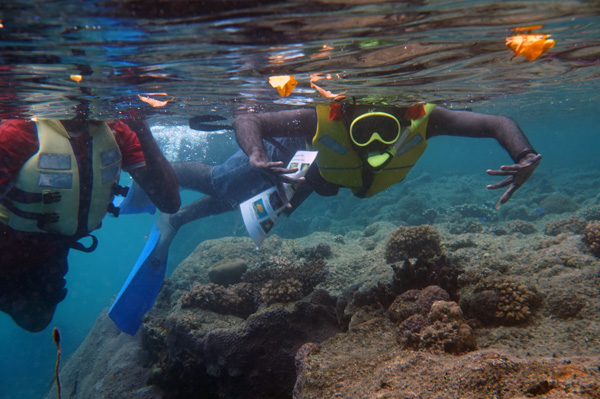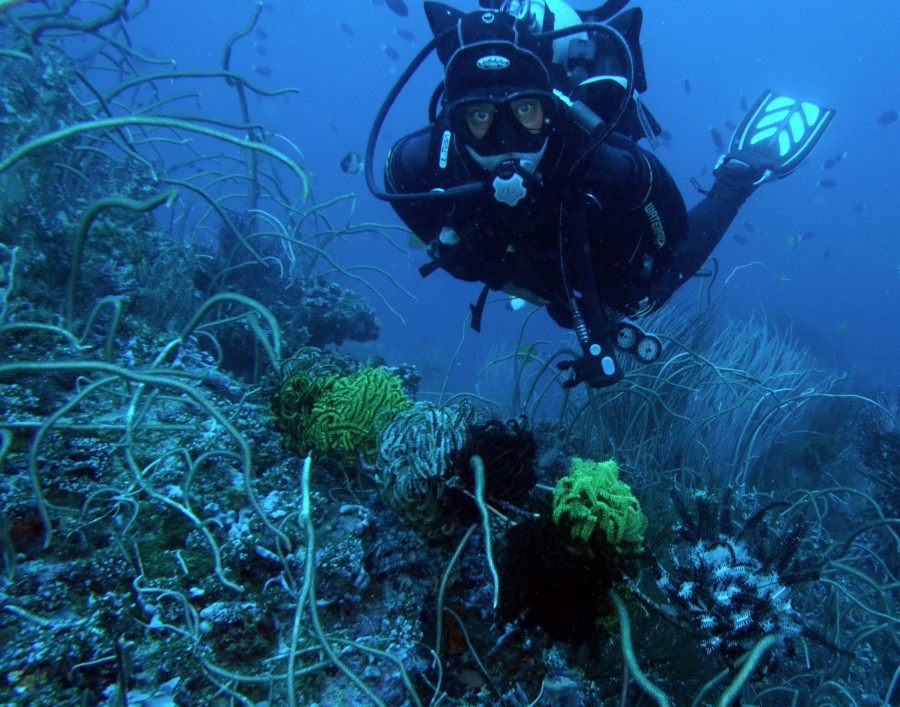It took me just two short flights from Cairns and an hour-long road trip to arrive in Kimbe bay, West New Britain province, Papua New Guinea. Sitting between two local villages, surrounded by tropical rainforest and nestled right on the shore of Kimbe bay – Walindi resort was an amazing location for my two-week visit (http://www.walindi.com). Max and Cecilie Benjamin, who have accommodated divers for over 25 years, kindly hosted me at Walindi – providing easy access to the Mahonia Na Dari research and conservation center right next door, as well as several amazing dive trips.
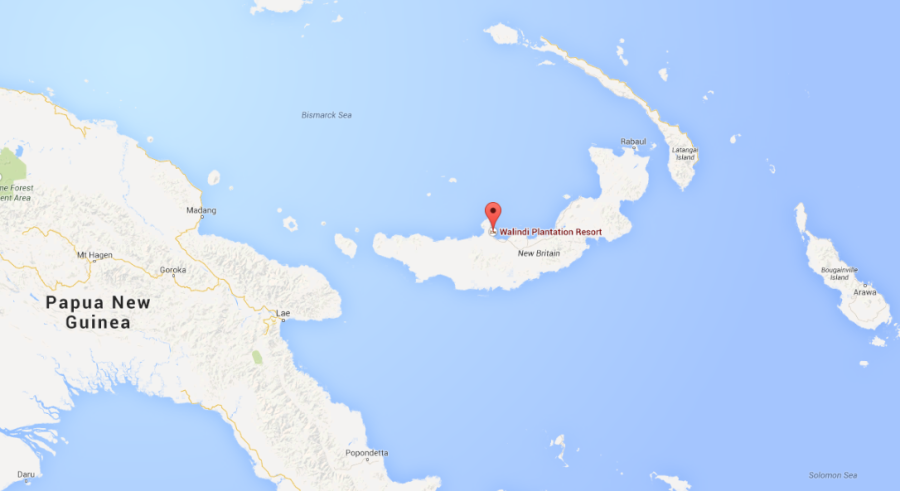
On top of discovering many of the amazing dive sites surrounding Kimbe bay, Max has also contributed so much to the region as a whole, and it is clear he has a valued status amongst the locals. The local elementary school provides just one example of his input. The image below shows an almost completed second classroom at the Max Benjamin Elementary school. A huge thank you to Max and Cecilie Benjamin for hosting me and making this great experience possible.
Each day I ventured 500m along the shore of Kimbe bay to Mahonia Na Dari. Consisting of numerous plantation houses, both local people and scientists use this area as a base to conduct research and education, and to inspire community action and sustainable development. As part of my stay I assisted with the Marine Environmental Education Program (MEEP), where both theory and practical classes are undertaken to educate local school children. Elementary students attend half-a-day theory classes and high school students participate in a 9-week intensive course, which includes theory lessons, individual research and practical excursions to coral reefs, local crocodile farms and oil palm plantations.
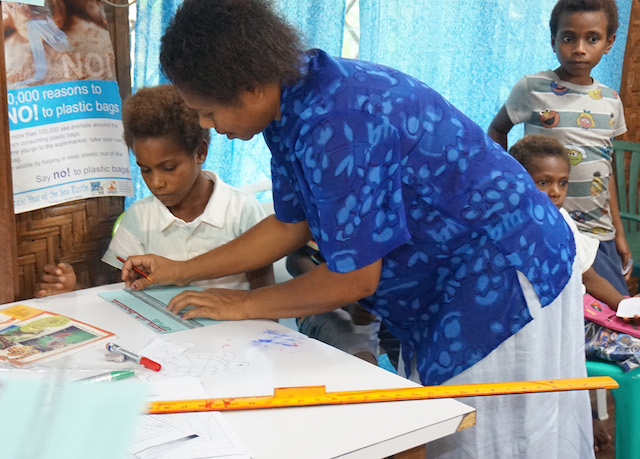
The MEEP teacher, Adolphina, covered a wide range of topics relating each one to the students’ home lives making it easier for them to understand. By the end of each class students had gained an understanding of different marine ecosystems, could identify several species of marine invertebrates/vertebrates, make connections between land and the sea, and were aware of human impacts to the ocean.
In addition to theory sessions, I joined a snorkel excursion to a nearby coral reef. This was the first time for some of the students to travel by boat, wear a life jacket and attempt to snorkel. Furthermore, the underwater camera was a huge novelty, with everybody wanting their underwater picture taken. After hours in the water, no one wished to return, but everyone returned with a greater understanding of their local coral reefs. Fortunately, fishing is uncommon in this region leaving many of the reefs intact and plenty of seafood for the locals to harvest. The nearby Kulungi region is a protected marine area, with another region- Kilu-Tamare – also currently undergoing the protection process. This also made for great diving, with the coral reefs out from Kimbe bay boasting amazing corals and great fish life. Furthermore, researchers from James Cook University are also based between Walindi and Mahonia, and it was great to hear of some up-and-coming research methods regarding the control of crown-of-thorns starfish.
At the end of their intensive course, students of the MEEP carry out a research topic of their own interest surrounding the marine environment, which is later presented to other schools creating a great pathway of knowledge. Mahonia’s MEEP program does a fantastic job at educating and instilling awareness, which will help conserve Papua New Guinea’s unique marine environment in the years to come. To the staff of Mahonia who run this wonderful education program – thank you so much! Please check out the website to learn more: www.mahonianadari.org


